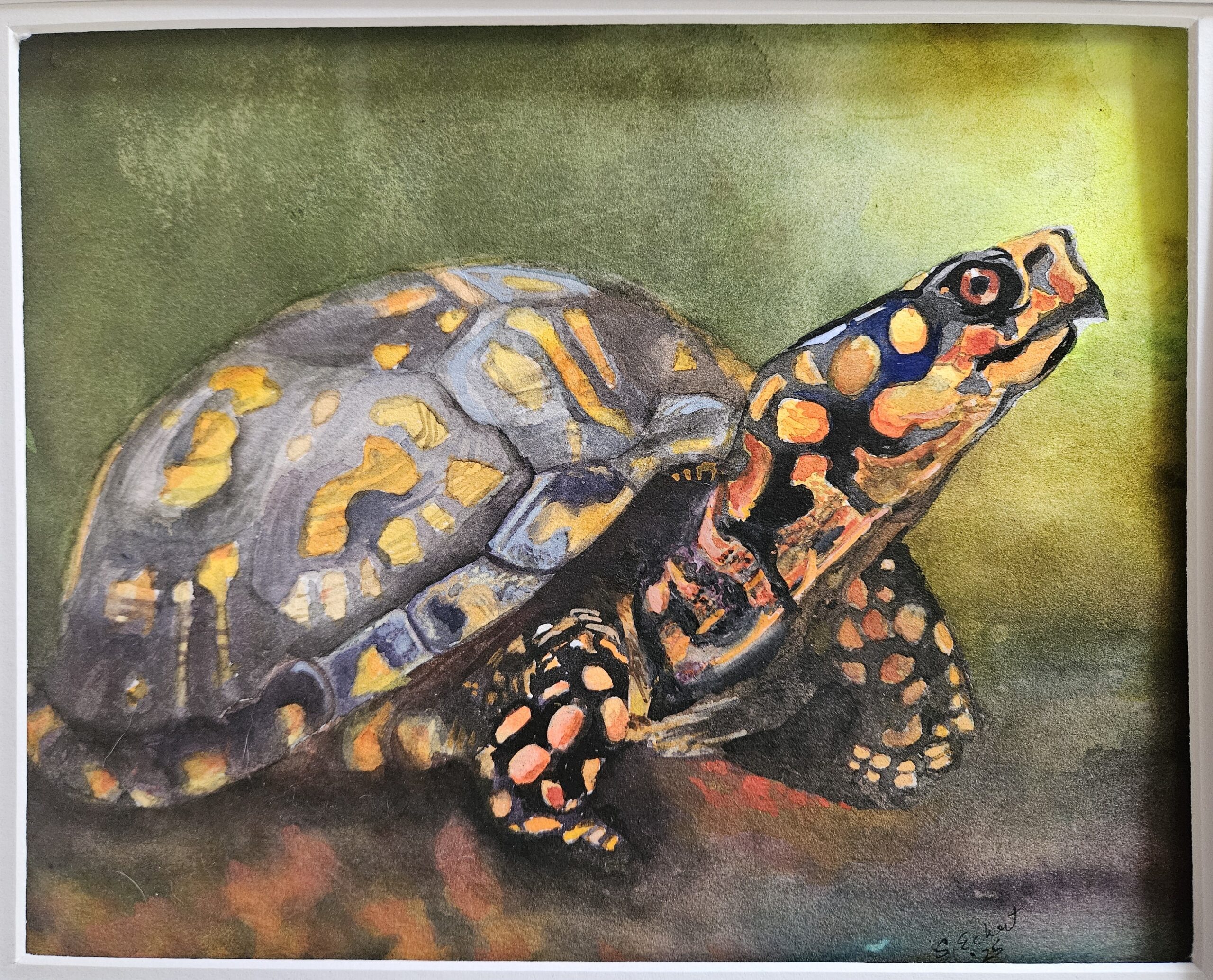Turtle Rock is a ten-acre, private nature preserve in the beautiful wooded landscape of Upper Bucks County, Pennsylvania near the Delaware River. The name is a nod to the box turtles who emerge from wooded areas each Spring to nest in open sunny areas. And the many rocks in and on the ground.
The box turtle painting featured on this page is a delightful gift from artist Sandra Eckert.

Acknowledgment
Turtle Rock–and the whole region–is located on the ancestral homelands of the Lenape whose communities were shattered and scattered by colonizers. Descendants of the Original People of these lands still live in this region. Yet many were pushed far West by settlers and government. Most Lenape now live in “Indian Country” in Oklahoma, Wisconsin, and in Canada.
Those who stayed in the area are fighting for state recognition. Consider offering support to the Lenape Nation of Pennsylvania.
Mission
To support the right of the land to thrive. We encourage native plants and forest regeneration, and honor the wild who find home here.

Four decades
Bri settled on these ten acres in the early 1990s and fell in love with the forest and meadow. At first, she didn’t know native from non-native plants. The land began to teach her in textures, tastes, and changes through the seasons. She studied tree biology and ecosystems.
John joined her at Turtle Rock in the early 2000s. He is a lifelong lay naturalist with a special affinity for aquatic environs and micro-ecosystems. Bri and John share a love and respect for nonhuman Nature and a desire for the land to thrive.
Restoration of this preserve began in earnest in Fall 2012 after Superstorm Sandy. A few years prior, we’d protected a smaller area: a natural wetland fed by surface springs. “Secret Springs” became a prolific amphibian breeding area, a base for wetland flora, as well as a watering stop for other woodland denizens.
Being located in a heavy deer browse area, we soon learned that large herbivores and a native plant preserve cannot coexist. The woodlands were not regenerating and the native understory had given way to prolific non-native brambles and shrubs.
To remedy, we installed deer fencing around a large portion of the land. The resident deer still browse the vast, wooded local area, including state gamelands. Other creatures have access to the protected land–be they turtles, fox, rabbits, snakes, and other land rovers–by way of openings along the bottom of the fence line.
Creating Turtle Rock is a loving work in progress. The first order of business after the deer fencing was to remove extensive tangles of non-native, invasive plants that shaded out the native flora and offered little nutrition to the resident fauna.
While removing the non-native plants, we began to (re)introduce the native plants that were historically indigenous to the area, but had been extirpated by deer or muscled out by invasives. Some–though few–natives had been able to compete with the non-natives and flourished once we fenced.
Now for the first time in a long time, hardwood seedlings and saplings sprout from the woodland floor. A new generation of trees will soon be tall enough to avoid future deer browsing. In coming decades, their seeds will disperse in the wind.
As we look towards the future, we seek folks who might want to join and continue our preservation work. We look forward to this sanctuary staying protected in perpetuity, the land treated as though they have personhood and the right to thrive–for indeed, this is true.

